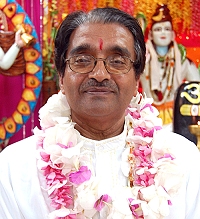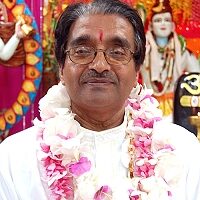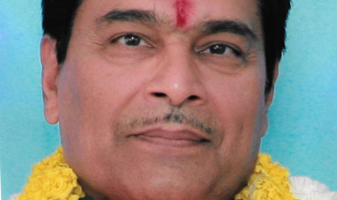From a satsang with Paramacharya of SWAHA, Pt. Hardeo Persad
One of the names of Shree Hanumaan is Vaayuputra – son of the Wind. The quality of the wind is characteristic of service to the world where it moves silently, constantly, both day and night, without ostentation, and seeks no recognition or appreciation for its role.
In like manner, Shree Hanumaanji is the perfect karma yogi, performing all actions with dedication and detachment. He acts as an instrument of destiny rather than being impelled by desires, needs and wants. He is an example of the true meaning of service to the seeker of spirituality.
As the son of Vaayu, Hanumaanji is also representative of the subtle body within man which comprises the breath body, mental body and intelligence body. The breath body is responsible for the movement of the life energy or praan-vaayus. These praan-vaayus, which comprise five major vital airs and five minor ones govern the region of the body from the throat to the bottom of the heart. The seat of the vital airs is the heart. Praan operates within the body to maintain life. As such, bodily functions are controlled by these vital airs.
The five Praan-vaayus are as follows:
- Praan: Responsible for the heartbeat and breathing. Praan enters the body through the breath and is sent to every cell through the circulatory system. It nourishes the brain and eyes.
- Apaan: Responsible for the elimination of waste products from the body through the lungs and excretory systems. It aids in the feeling of equanimity and groundedness.
- Udaan: Responsible for producing sounds through the vocal organ, as in speaking, singing, laughing, and crying. It is a form of rising air. It affects the throat, neck and thyroid functions. Also, it represents the conscious energy required to produce the vocal sounds corresponding to the intent of the being.
- Samaan: Responsible for the digestion of food and cell metabolism (i.e., the repair and manufacture of new cells and growth). Samaan also includes the heat-regulating processes of the body. Auras are projections of this current. Through meditational practices one can see auras of light around every being. Yogis who do special practice on samaan can produce a blazing aura at will.
- Vyaan: Pervades the entire body by the process of circulation. It affects the blood, lymphatic and nervous systems.
In yoga, there is upa-praan or minor praan, with the following classification:
- Naaga: Responsible for burping
- Kurma: Responsible for blinking
- Devadatta: Responsible for yawning
- Krikala: Responsible for sneezing
- Dhananjaya: Responsible for opening and closing of heart valves.
The practice of yoga, more specifically, praanaayaam (controlled breathing) and aasan (posture), are meant to optimize the functioning of these vaayus. Through a disciplined approach in the practices of these forms of niyam, one can uplift oneself and restore vibrant health. At such a stage, one personifies qualities of vigour, vitality, courage, determination and valour, all symbolic of Hanumaanji.
As we celebrate Shree Hanuman Jayanti, we should all seek to uplift our lives through discipline, controlled breathing and aasan, and a determination to attain the grace of the Lord.



